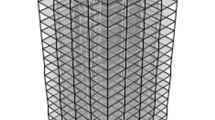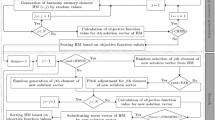Abstract
The paper addresses the issue of researching into the engineering characteristics of rotational strong ground motion components and rotational effects in structural response. In this regard, at first, the acceleration response spectra of rotational components are estimated in terms of translational ones. Next, new methods in order to consider the effects of rotational components in seismic design codes are presented by determining the effective structural parameters in the rotational loading of structures due only to the earthquake rotational components. Numerical results show that according to the frequency content of rotational components, the contribution of the rocking components to the seismic excitation of short period structures can never be ignored. During strong earthquakes, these rotational motions may lead to the unexpected overturning or local structural damages for the low-rise multi-story buildings located on soft soil. The arrangement of lateral-load resisting system in the plan, period, and aspect ratio of the system can severely change the seismic loading of wide symmetric buildings under the earthquake torsional component.











Similar content being viewed by others
References
De La Llera JC, Chopra AK (1994) Accidental torsion in buildings due to base rotational excitation. Earthquake Eng Struct Dynam 23:1003–1021
Eurocode 8, Design provisions for earthquake resistance of structures, European Committee for Standardization, Part 6: Tower, masts, and chimneys, EC8.6 (2005) EN1998-6.
Ghafory-Ashtiany M (2001) The effect of random mass, stiffness and eccentricity parameters on seismic response of torsional system. Iranian Journal of Science & Technology 25:93–114
Ghafory-Ashtiany M, Falamarz-Sheikhabadi MR (2010) Evaluation influence of rotational components on the behavior of structures, Report International Institute of Earthquake Engineering and Seismology, IIEES, in Farsi
Ghafory-Ashtiany M, Singh MP (1984) Seismic response for multi-component earthquakes, Report No. VPI-E-84, VPI & SU, USA
Ghafory-Ashtiany M, Singh MP (1986) Structural response for six correlated earthquake components. Earthquake Eng Struct Dynam 14:103–119
Ghayamghamian MR, Nouri GR (2007) On the characteristics of ground motion rotational components using Chiba dense array data. Earthquake Eng Struct Dynam 36:1407–1429
Ghayamghamian MR, Nouri GR, Igel H, Tobita T (2009) The effects of torsional ground motion on structural responses: code recommendation for accidental eccentricity. Bull Seismol Soc Am 99:1261–1270
Hao H (1996) Characteristics of torsional ground motions. Earthquake Eng Struct Dynam 25:599–610
Hejal R, Chopra AK (1989) Earthquake analysis of a class of torsionally coupled buildings. Earthquake Eng Struct Dynam 18:305–323
Kalkan E, Grazer V (2007) Coupled tilt and translational ground motion response spectra. J Earthquake Eng 133:609–619
Kan CL, Chopra AK (1977) Elastic earthquake analysis of a class of torsionally coupled buildings. J Struct Div 103:821–838
Lee VW, Trifunac MD (2009) Empirical scaling of rotational spectra of strong earthquake ground motion. Bull Seismol Soc Am 99:1378–1390
Li HN, Sun LY, Wang SY (2004) Improved approach for obtaining rotational components of seismic motion. Nucl Eng Des 232:131–137
Newmark NM (1969) Torsion in symmetrical building, Proc. 4th world conf. earthquake eng. Santiago, Chile 2, A.3 19–32
Pujol J (2009) Tutorial on rotations in the theories of finite deformation and micropolar (Cosserat) elasticity. Bull Seismol Soc Am 99:1011–1027
Riddel R, Vasquez J (1984) Existence of centers of resistance and torsional uncoupling of earthquake response of buildings, Proc. of 8th World Conference on. Earthquake Engineering 4:187–194
Ruiz R, Penzien J (1969) Probabilistic study of the behaviour of structures during earthquakes, Report EERC-69-03, Earthquake Engineering Research Center, University of California at Berkeley, CA
Rutenberg A, Heidebrecht AC (1985) Response spectra for torsion, rocking and rigid foundations. Earthquake Eng Struct Dynam 13:543–557
Shakib H, Tohidi RZ (2002) Evaluation of accidental eccentricity in buildings due to rotational component of earthquake. J Earthquake Eng 6:431–445
Trifunac MD (1982) A note on rotational components of earthquake motions on ground surface for incident body waves. Soil Dynam Earthquake Eng 1:11–19
Trifunac MD (2009) The role of strong motion rotations in the response of structures near earthquake faults. Soil Dyn Earthq Eng 29:382–393
Tso WK (1990) Static eccentricity concept for torsional moment estimations. J Struct Eng 116:1199–1212
Tso WK, Dempsy KM (1980) Seismic torsional provisions for dynamic eccentricity. Earthquake Eng Struct Dynam 8:275–289
Twiss RJ, Souter BJ, Unruh JR (1993) The effects of block rotations on the global seismic moment tensor and the patterns of seismic P and T axes. J Geophys Res 98:645–674
Uniform Building Code, International Conference of Building Officials, (1997).
Zembaty Z (2009) Rotational seismic load definition in Eurocode 8, part 6, for slender tower-shaped structures. Bull Seismol Soc Am 99:1483–1485
Zembaty Z, Boffi G (1994) Effect of rotational seismic ground motion on dynamic response of slender towers. Eur Earthq Eng 1:3–11
Acknowledgments
Authors wish to thank anonymous reviewers of this paper because of their constructive and valuable comments on the paper.
Author information
Authors and Affiliations
Corresponding author
Rights and permissions
About this article
Cite this article
Falamarz-Sheikhabadi, M.R., Ghafory-Ashtiany, M. Approximate formulas for rotational effects in earthquake engineering. J Seismol 16, 815–827 (2012). https://doi.org/10.1007/s10950-012-9273-z
Received:
Accepted:
Published:
Issue Date:
DOI: https://doi.org/10.1007/s10950-012-9273-z




